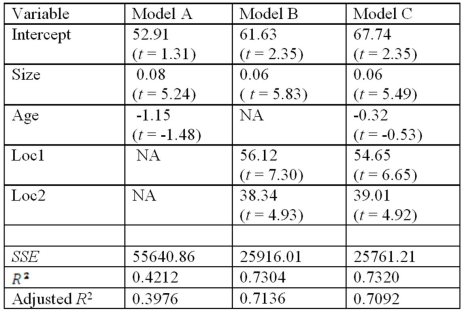Exhibit 17.8.A realtor wants to predict and compare the prices of homes in three neighboring locations.She considers the following linear models:
Model A: Price = β0 + β1Size + β2Age + ε,
Model B: Price = β0 + β1Size + β2Loc1 + β3Loc2 + ε,
Model C: Price = β0 + β1Size + β2Age + β3Loc1 + β4Loc2 + ε,
where,
Price = the price of a home (in $thousands),
Size = the square footage (in square feet),
Loc1 = a dummy variable taking on 1 for Location 1,and 0 otherwise,
Loc2 = a dummy variable taking on 1 for Location 2,and 0 otherwise.
After collecting data on 52 sales and applying regression,her findings were summarized in the following table.  Note: The values of relevant test statistics are shown in parentheses below the estimated coefficients.
Note: The values of relevant test statistics are shown in parentheses below the estimated coefficients.
Refer to Exhibit 17.8.What is the p-value for testing the significance of Age in Model C?
Definitions:
Connecting Points
The process or technique of determining a path or drawing a line between multiple points in a space.
Option
In finance, it refers to a contract which gives the buyer the right, but not the obligation, to buy or sell an underlying asset at a specified price on or before a specified date.
Observations
Data points or individual pieces of information collected during a study or research.
Simple Linear Regression
An analytical technique that utilizes a linear equation to depict the connection between a single independent variable and a dependent variable.
Q12: Describe the cultural capital benefits of an
Q32: Exhibit 17.9.A bank manager is interested in
Q44: Exhibit 20.3.A company which produces financial accounting
Q51: Exhibit 15-9.An economist estimates the following model:
Q52: Consider the following price (in dollars)and quantity
Q74: The logistic model can be estimated through
Q93: Exhibit 12.2 A university has six colleges
Q104: Consider the following simple linear regression model:
Q105: Exhibit 17.7.To examine the differences between salaries
Q111: Exhibit 17.4.A researcher wants to examine how